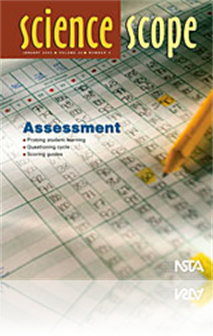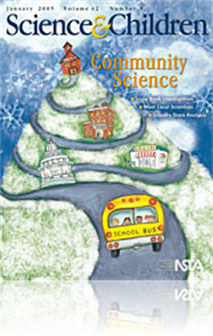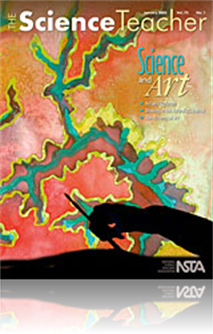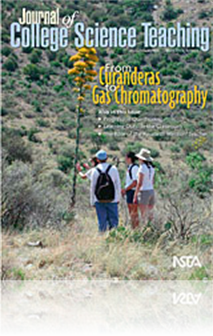All Resources
Journal Article
Try using an assessment cycle to effectively probe students' understanding of scientific concepts. The diagnostic, formative, summative, and confirmatory assessment can be embedded into any unit of study. ...
Journal Article
An elementary school brings in community volunteers for a full-day, all-school event focused on real world science. This article describes the planning process and types of science professionals and non-professionals recruited for the event....
Journal Article
Discover why we don't feel like we are spinning even though the Earth is spinning at close to 1,609 kph by delving into this month's, Ask the Experts column. You're sure to be satisfied with the interesting and factual answer to this thought-provokin...
Journal Article
Scope on Safety: Sticker Shock--There’s a high price to pay for ignorance about Electricity
Lighting a fluorescent bulb by touching it to the nose of a student who has one hand on an electrostatic generator is an illuminating demonstration of the properties of voltage. It demonstrates that the several hundred thousand volts of electricity p...
Journal Article
Favorite Demonstration: An Inexpensive Resonance Demonstration
Resonance is commonplace and easy to recognize when it occurs. Yet it is also one of the most impressive and often unexpected phenomenon in all of physics. This article describes a visually appealing resonance demonstrator that uses readily available...
Journal Article
Editorial: Nature, Vanity, and the Teaching of Evolution
We enjoy learning about nature--we're fascinated by medical breakthroughs, technological advances and Earth's natural wonders. But there is another side of nature that many people don't like to hear about. Instead of being harmonious and altruistic...
Journal Article
In this science- and social studies-integrated lesson, students researched the produce found at their local grocery store. The class learned the difference between fruits and vegetables and learned the origins of various “exotic” food items. Stud...
Journal Article
This article describes an “inventors workshop” in which second-grade students used Lego and Robolab computer software to create and test their own inventions. After exploring Legos and their history, students created and programmed vehicles....
Journal Article
Writing and Drawing in the Naturalist's Journal
The mutually reinforcing integration of science and art is clearly seen in the journals and notebooks kept by creative thinkers and explorers since the time of Leonardo da Vinci. The Naturalist’s Journal is an effective tool for learning about natu...
Journal Article
In this section the editor discusses opportunities for teachers to demonstrate science concepts on the playground or in one's local neighborhood. The current journal issue is dedicated to finding and using these local resources, referred to as "Comm...
Journal Article
Formative Assessment Probes: Uncovering Students' Ideas in Science
Formative assessment probes can help teachers find out what students' ideas are before teaching lessons and use the information to adjust instructional strategies. This article defines formative assessment probes, provides examples of probes, and des...
Journal Article
Merging Science and Society: An Issues-Based Approach to Nonmajors Biology
The effectiveness of an issues-based approach to nonmajors biology was investigated. The integration of online critical-thinking exercises and in-class discussions of science-related issues did not improve exam scores. However, students did indicate ...
Journal Article
Editor's roundtable: Standard-izing test items (January 2005)
American Association for the Advancement of Science's Project 2061, one of the first organizations to focus on content standards and their role in curriculum, instruction, and assessment, is launching a new effort funded by the National Science Foun...
Journal Article
Editor's Corner: Making Sense of the World
In this month's Editor's Corner, the Field Editor paints a vivid word picture to describe the theme in this month's edition of The Science Teacher, which is the blending of art and science to help students make sense of the world. The overlap of art ...
Journal Article
Idea Bank: A Resonance Tube Experiment Using "Boomwhackers"
Bring the "sound of music" to your science classroom--this activity uses the lengths and fundamental frequencies of a set of resonance tubes to verify the expression for the relationship between these two quantities and the value of the speed of soun...






